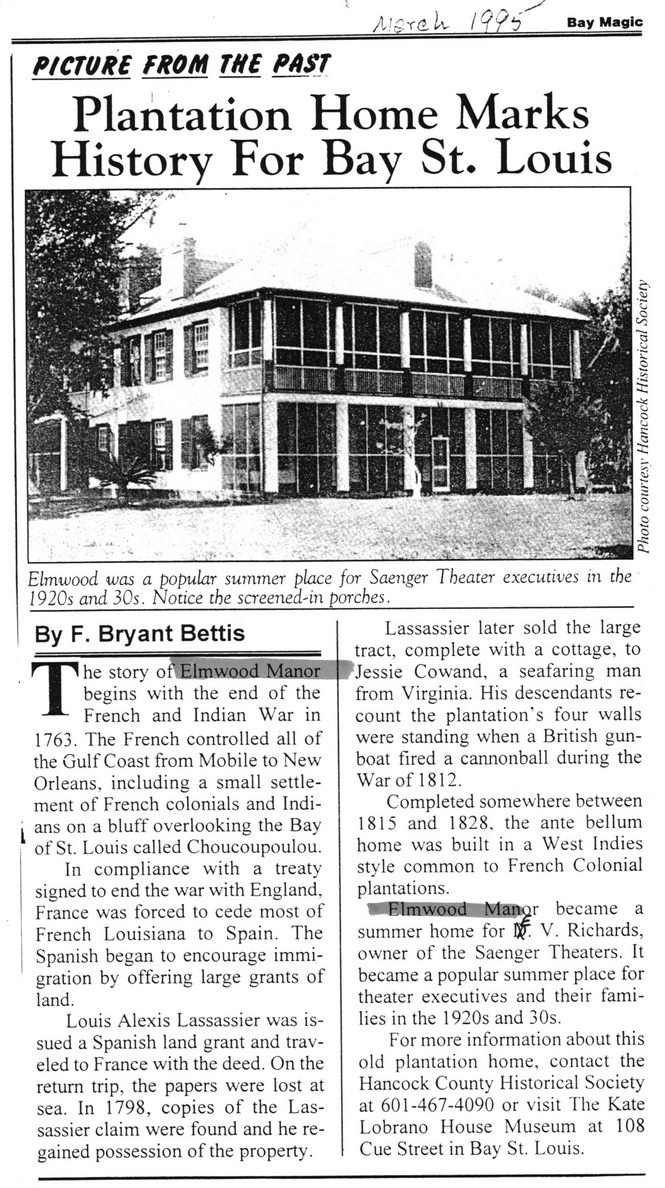This text was obtained via automated optical character recognition.
It has not been edited and may therefore contain several errors.
/t 'rgTdiv I *5 Bay Magic PICTURE FROM THE PAST Plantation Home Marks History For Bay St. Louis Elmwood was a popular summer place for Saenger Theater executives in the 1920s and 30s. Notice the screened-m porches.___________________________________________ t By F. Bryant Bettis The story of Elmwood Manor begins with the end of the French and Indian War in 1763. The French controlled all of the Gulf Coast from Mobile to New Orleans, including a small settlement of French colonials and Indians on a bluff overlooking the Bay of St. Louis called Choucoupoulou. In compliance with a treaty signed to end the war with England, France was forced to cede most of French Louisiana to Spain. The Spanish began to encourage immigration by offering large grants of land. Louis Alexis Lassassier was issued a Spanish land grant and traveled to France with the deed. On the return trip, the papers were lost at sea. In 1798, copies of the Lassassier claim were found and he regained possession of the property. Lassassier later sold the large tract, complete with a cottage, to -/Jessie Cowand, a seafaring man from Virginia. His descendants recount the plantation's four walls were standing when a British gunboat fired a cannonball during the War of 1812. Completed somewhere between 1815 and 1828, the ante bellum home was built in a West Indies style common to French Colonial plantations. Flmwood Manor became a summer home for ljf V. Richards, owner of the Saenger Theaters. It became a popular summer place for theater executives and their families in the 1920s and 30s. For more information about this old plantation home, contact the Hancock County Historical Society at 601-467-4090 or visit The Kate Lobrano House Museum at 108 Cue Street in Bav St. Louis.

Elmwood Plantation Document-(14)